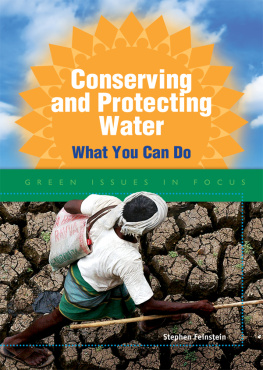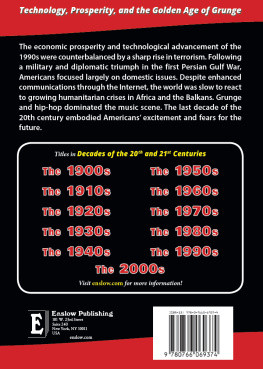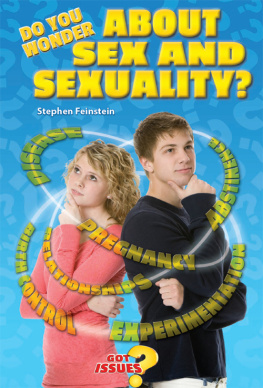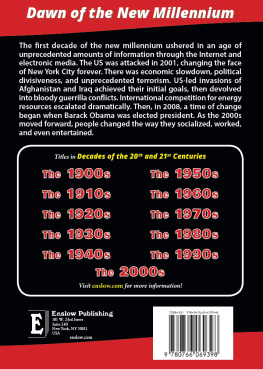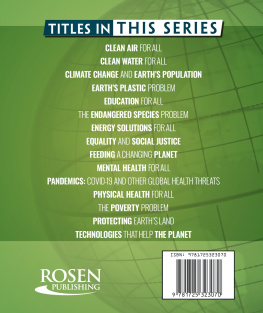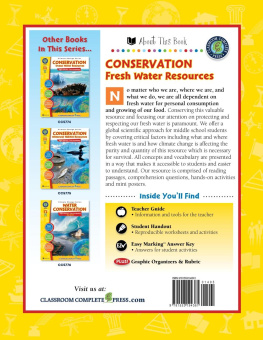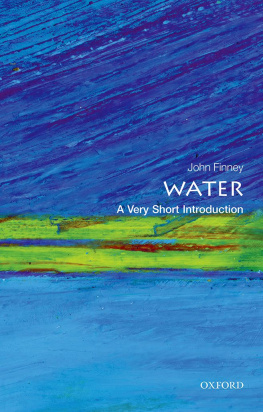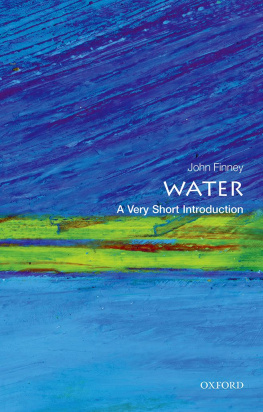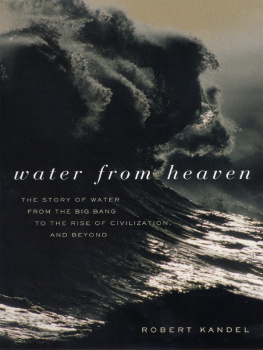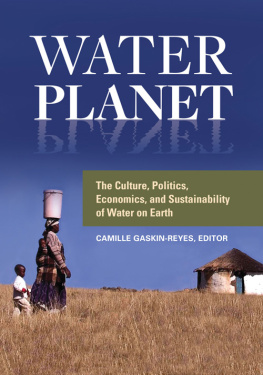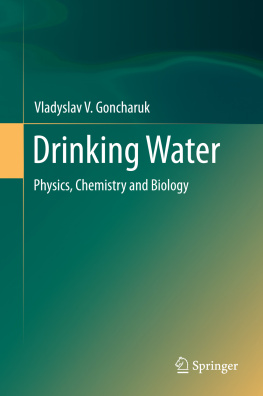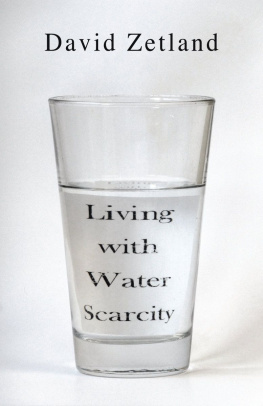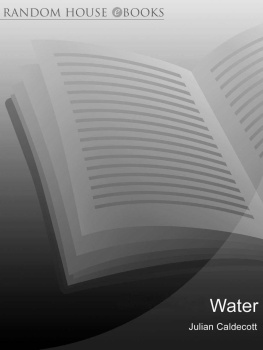Lakes, rivers, oceans in danger: What can you do?
Some people think the earth should be called the water planet, because even from space we can see that it is covered with water. But our water is endangered by pollution and global warming. Soon we may run short of water for drinking, irrigation, and other needs. Learn what causes these problems, and find out what kids can do to help save and protect this precious resource.
About the Author
Stephen Feinstein is a writer of educational materials, specializing in social studies and language arts. Among his books for Enslow Publishers, Inc., is Sexuality and Teens: What You Should Know About Sex, Abstinence, Birth Control, Pregnancy, and STDs.
Can you imagine putting dirty water into a ceramic pot and having it come out ready to drink? That is what happens with a water-purifying device promoted by Ron Rivera for use in the Third World, where clean drinking water is desperately needed. Rivera says, You put dirty water ingray water that many communities still drinkand it comes out crystal clear. Rivera called his ceramic water filters weapons of biological mass destruction because they kill germs that cause illness. Rivera spent twenty-five years visiting many poor villages throughout much of the Third World. Wherever he went in Africa, Asia, and Latin America, he worked with potters, showing them how to make the filters.

Image Credit: Associated Press
Tracy Hawkins makes clay water filters in her ceramics studio for use in developing countries.
Riveras device resembles a big terra-cotta flowerpot. This ceramic water filter was invented by a Guatemalan chemist named Fernando Mazariegos. The pot is made of clay mixed with sawdust or ground rice husks. When the pot is fired, the sawdust or rice husks burn away, leaving small pores. Water is able to seep through the pores. But the bacteria in the water cannot pass through the tiny pores. After firing, the filter is coated with a silver solution. The coating kills more than 98 percent of contaminants that cause diarrhea, a leading cause of death in the Third World. Thanks to Riveras filters, the incidence of diarrhea is cut in half. This is a great benefit to children, who are especially vulnerable to this disease. The ceramic filter fits into a five-gallon container that collects the water. The container is fitted with a spigot. The ceramic filter can purify one to three quarts of water an hour.
Rivera set up small businesses to produce the water filters in many countries. These included Ghana, Cambodia, Yemen, and Colombia. His factories have produced about three hundred thousand filters, used by about 1.5 million people.
In the United States, we tend to take clean water for granted. It is always available from faucets when we are thirsty or when we want to take a shower. But this is not the case in many other parts of the world. In much of Africa, people have to walk several miles for their water. In the more arid areas it is necessary to walk even farther. Sometimes all they find is a pond with slimy water. Waterborne diseases such as typhoid and cholera are common. An enormous number of people in Africa, more than 90 percent of that continents population, have to dig in the ground for their water. Where the wells are very deep, people have to line up in human chains to bring up the water.
In much of Africa, people have to walk several miles for their water.
Africa is not the only place where lack of access to freshwater threatens the health and livelihoods of millions of people. The water crisis is everywhere, on every continent and in cities large and small. Water is in crisis in China, in Southeast Asia, in the American Southwest. Parts of Europe also face shortages. Droughts have become more widespread and water tables have been dropping. When wetlands become dry, the groundwater becomes polluted with contaminants. In other areas, rain comes so hard and fast in sudden downpours that flooding occurs. In the blink of an eye, rivers become raging torrents.
Water is absolutely essential for the earths unique characteristicthe presence of life. Of course, the planets amazing diversity of living organisms includes us. Freshwater is essential to human health, agriculture, industry, and natural ecosystems. But we do not have an infinite supply of freshwater. Already, over one billion people (one in every six) around the world do not have access to clean drinking water. It is estimated that by the year 2025, 5.7 billion people will suffer from water shortages. That adds up to two-thirds of the worlds population. So it is easy to see that access to freshwater is becoming one of the most serious problems we face.

Image Credit: Associated Press
A mother and child in Zimbabwe carry water from a well to their home.
Those of us who have had easy access to fresh water all our lives have gotten very used to its availability. But have you ever wondered why water is so incredibly important to us? Did you know that each one of us is mostly made up of water? Consider these facts: The human body is about 60 percent water by weight. Our blood is 83 percent water. Our lungs are 90 percent water. And our brain is 70 percent water. Even our food is mostly water.
Not surprisingly, we need to consume an adequate amount of water to maintain our existence. A bare minimum of 0.6 gallons of water, either from drinking or from food, is a daily requirement. On average, most people in the United States do not drink more than a gallon a day. These same people use almost a hundred gallons a day to wash and flush the toilet. In contrast, in Africa, the average person uses just under one gallon of water a day.
To satisfy the daily food and clothing needs of each person, agriculture and industry require incredibly huge amounts of water. It takes about twenty-five gallons of water to grow a pound of wheat, and forty-nine gallons for a pound of apples. It takes 1,630 gallons to produce a pound of pork and 5,214 gallons to produce a pound of beef.
Earth is the only planet in the solar system that has liquid water on its surface. Indeed, most of Earths surface is covered with waterso much water that the planet appears blue from space. Yet much of our blue planet is either already in the midst of, or will soon be, facing a freshwater scarcity crisis. For many of us, freshwater is still a seemingly abundant resource on the earth. But is it really? How much water is there?
Arthur C. Clarke, the author of 2001: A Space Odyssey, once said: How inappropriate to call this planet Earth, when clearly it is Ocean. Such a huge quantity might lead you to believe that there is an infinite supply of water on this planet. But how much of the earths water is actually usable?

Image Credit: Shutterstock
There is so much water on Earths surface that the planet appears blue from space.
The oceans make up about 96.5 percent of Earths water. Much of the remaining 3.5 percent of all water that is not salt water is frozen in glaciers and polar ice. So that does not leave very much water for use by humans. In fact, less than 0.08 of 1 percent of all of the Earths water is accessible to us.

